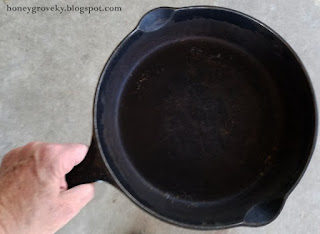Almus was raised by a childless great-uncle and great-aunt, Robert and Rachel Hill. Uncle Robert had a small farm, but by the time Almus was a teenager, Robert and Rachel had moved to town (Loudonville, Ohio,) where Robert became a businessman, the town constable, and eventually the mayor. It's likely that Almus had a rather pampered "only child" life with this older couple before he finally left home for good.
Almus married my great-great grandmother Lucinda Martin in about 1864, and their first child was born in Loudonville in 1865. I don't know if Almus and Lucinda were living with Robert and Rachel Hill or not, but I wouldn't be surprised. By 1867, they moved to Allen County, Ohio, where some of Lucinda's brothers and sisters lived.Then they moved to Crawford County, Ohio, and Almus started working for the railroad as a brakeman.
In 1878, Almus's maternal grandmother, Barbara Jones, passed away, and Almus inherited his mother's share of the Jones farm -- 119 acres of land in Mahoning County, Ohio. Almus could have moved there and assumed ownership of part of a prosperous farm. But instead, Almus accepted an offer of $1200 for his inheritance from the other Jones heirs (two uncles and an aunt, Mary Ann Jones' siblings).
 |
| An 1880 newspaper ad for Kansas land |
Sadly, farming in Kansas didn't go well for Almus. Periods of drought and bad weather made life hard. The economy was experiencing booms and busts. By 1889, Almus was so fed up that he moved back to Crawford County, Ohio.
Too broke to afford the train, Almus and Lucinda and the younger children made the 900 mile trip in a wagon, arriving in the fall. (Several of the older children stayed in Kansas, including my great-grandfather Charlie Hill.) Almus got his old job as a railroad brakeman back, and about six months later, he fell between railroad cars and lost his life.
I've wondered if the reason that Almus didn't want to start farming the Jones land was that he didn't know much about farming and didn't want to be embarassed in front of the Jones family whom he didn't know very well. (I'm pretty sure that Almus had some psychological issues.)
Tonight, I transcribed the 1870 Agricultural Schedule (part of the Federal Census) for Edward Jones, one of the uncles who bought Almus's share of the Jones farm. Edward owned a farm of his own and was obviously very successful.
The $1200 that Almus got for 119 acres of the Jones farm was a pittance, compared to Edward Jones' farm revenue for 1870 (not even considering the other Jones brother and sister.) I suspect that Almus was poorly informed about the value of the land he inherited. With his head full of dreams about making a fortune in Kansas, he sold his birthright cheap and lost it all.
Download an easy-to-print copy at https://drive.google.com/open?id=1oHbVZfPhA8pbV1xiZc0TDQJrzDfKrYF1ZwRfjfREQpY
















